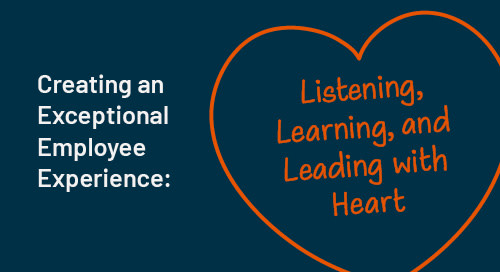 In today’s competitive talent market, creating an exceptional employee experience isn’t a luxury—it’s a leadership imperative. For HR and L&D professionals, the path forward is clear: if we want to build workplaces where people thrive, we must listen deeply to our employees, and then act.
In today’s competitive talent market, creating an exceptional employee experience isn’t a luxury—it’s a leadership imperative. For HR and L&D professionals, the path forward is clear: if we want to build workplaces where people thrive, we must listen deeply to our employees, and then act.
At Blanchard, we have a long-held belief that feedback is a gift. We think the key to unlocking a powerful employee experience lies in gathering authentic, actionable, and ongoing feedback—and doing something with it.
Here are five ways you can improve your ability to listen, learn, and lead with feedback from your people.
1. Go Beyond Pulse Surveys: Create Meaningful Feedback Loops
While pulse surveys can quickly capture trends, they often skim the surface. Employees might tick a box but not feel heard. Consider blending traditional annual surveys with real-time, crowdsourced feedback that gets to the heart of the matter.
By asking employees to upvote the issues that matter most, organizations can surface hidden pain points and opportunities that might otherwise go unnoticed. This method not only engages employees—it empowers them to shape the workplace they inhabit every day.
Takeaway: Complement your surveys with upvotable forums or digital town halls to uncover priority issues. Consider platforms that allow for live feedback aggregation and prioritization.
2. Build Psychological Safety Through Transparency
Trust is the currency of culture. Yet many employees remain skeptical that their feedback is truly anonymous or that their voices will lead to change—especially in smaller teams.
Ask your leaders to hold regular town halls where they publicly respond to top-voted survey themes—this models vulnerability and responsiveness. As Blanchard CEO Scott Blanchard will attest: “Never delete feedback, even when it’s spicy. It’s a powerful signal that employee voices are valued, not silenced.”
Takeaway: Normalize radical transparency. Make it clear when surveys are anonymous, communicate how results are used, and ensure leadership openly responds to employee concerns.
3. Enlist Managers as Culture Catalysts
Managers are the frontline of culture and their role in creating psychological safety is unmatched. Equip managers to have follow-up conversations with their teams where they work together to interpret survey results and co-create solutions.
When managers lead insight conversations, employees feel supported and empowered. This isn’t just HR’s job—it’s everyone’s job.
Takeaway: Provide managers with training and toolkits to guide post-survey discussions. Hold leaders accountable for closing the feedback loop with their teams.
4. Action Drives Engagement
One of the biggest threats to engagement is inaction fatigue. When employees don’t see tangible results from their feedback, participation plummets.
Combat this with a structured action cycle: respond in real time, empower teams to co-own solutions, and follow up with a four- to six-week summary of what’s being done. This consistent cadence reinforces that feedback matters—and it builds credibility.
Takeaway: Set a feedback-to-action rhythm. Announce changes publicly and tie them directly to employee input.
5. Embed Values at Every Turn
Make sure your feedback strategy supports and provides behavioral examples of your company’s core set of values. At Blanchard, our actions are guided by these values:
· Be True: Operate with transparency and directness.
· Scale Kindness: Lead with compassion and fairness.
· Transform Together: Align heart and mind to reach new heights.
· Relentless Pursuit: Embody a constant quest for growth.
These principles aren’t just aspirational—they’re operational. What are your organization’s values? How are they being used to guide leadership decisions and employee interactions?
Takeaway: Anchor your feedback strategy in core values. Let them serve as both a compass and a filter for action.
Final Thought: Don’t Just Hear Your People—Believe Them
Creating an exceptional employee experience doesn’t require revolutionary technology or a massive budget. It requires intention, courage, and a willingness to listen with the goal of acting.
When employees speak, they’re offering you a roadmap to a better workplace. The question is this: Are you ready to receive it—and respond with heart?
______________________________________________________________________________________
PS: Are you attending this year's SHRM 2025 Conference & Expo? Interested in learning more about creating an exceptional employee experience? It's one of our focus areas. Stop by and visit with Blanchard experts. Learn more using this link!
About the Author
More Content by David Witt
























